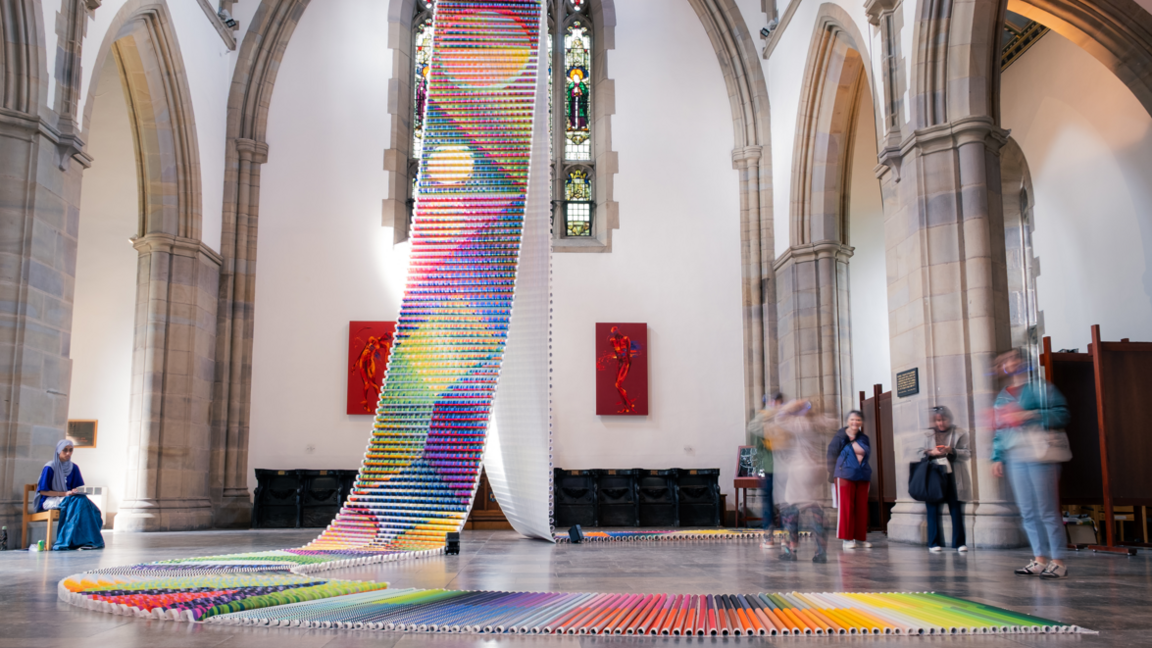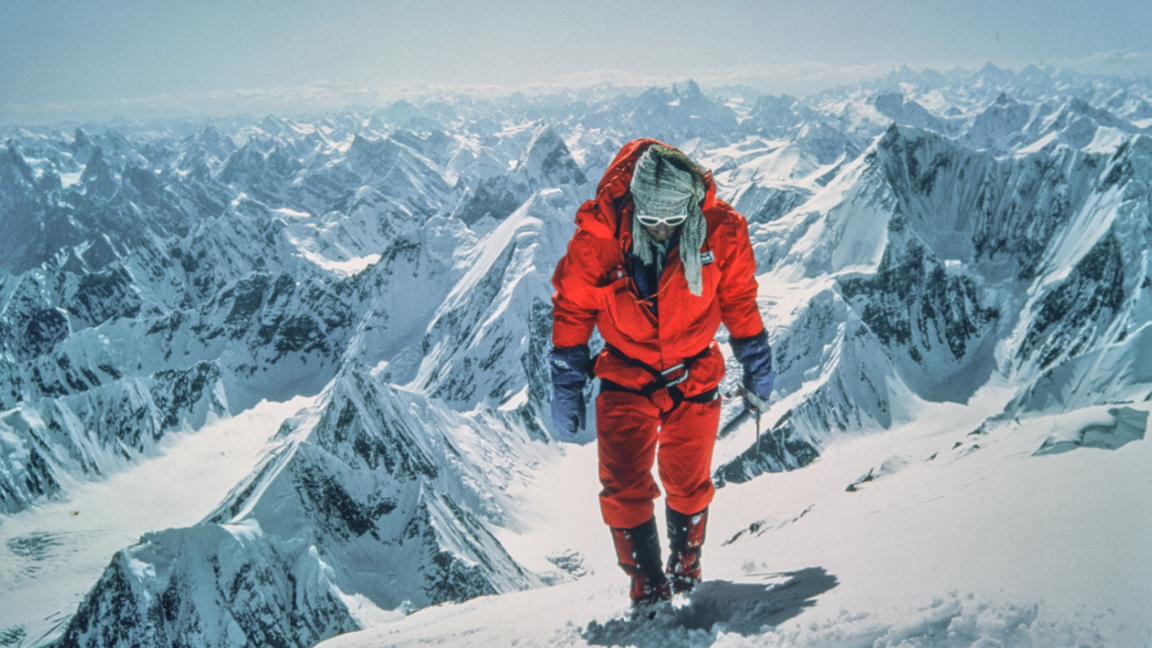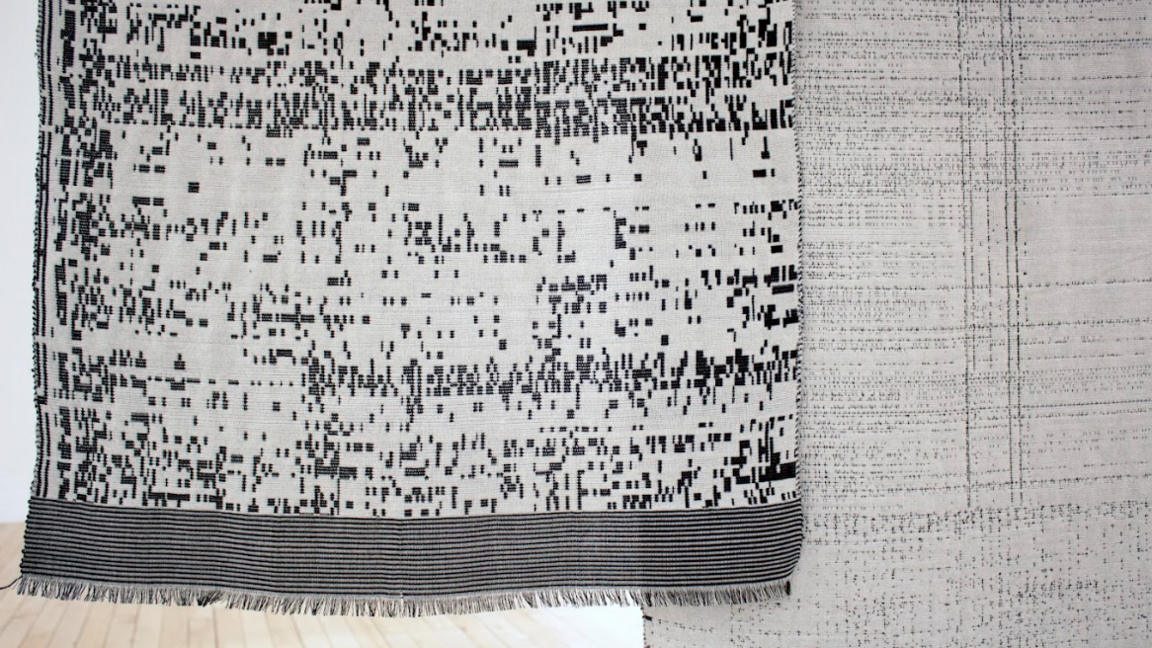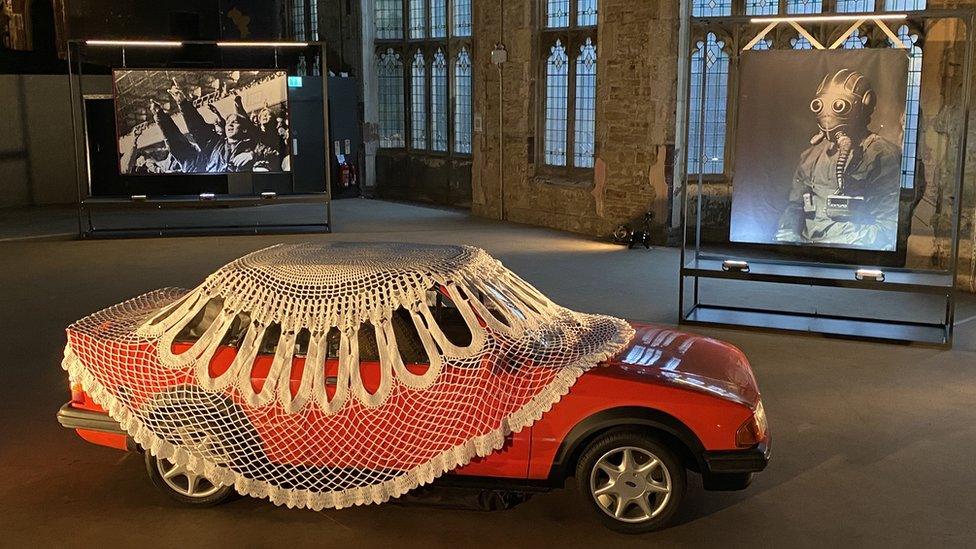British Textile Biennial opens to the public

The British Textile Biennial has been staged in Lancashire since 2017
- Published
Lancashire opened its doors to the world this week as it launched this year's British Textile Biennial (BTB).
The BTB is a bi-annual event which showcases and celebrates the rich textile industry of the UK by commissioning artists to produce work that casts new perspective on the role fabrics play in our world.
This year's event, which runs until 2 November, revisits the textile pioneers of 20th Century Lancashire through British brands and the innovation of synthetic fabrics in the region.
The exhibition also shines a light on past textile practices and their environmental impact - highlighting how future advances must learn from the past.
British brand Grenfell first weaved their revolutionary 'Grenfell Cloth' in 1923 at the now-demolished Lodge Mill, Burnley.
It was developed at the request of military medical officer and Cheshire-born Sir Wilfred Grenfell who needed a jacket made from a tightly woven, windproof and water-resistant material for his duties.
BTB25 also looks at the creation of polyester, developed in a laboratory in Accrington during wartime.
The fabric quickly became a part of everyday life and transformed women's domestic labour.
Clothing shops which sold the latest fashions became a key tool for technological advancements during the Cold War.

Clothing from the first expedition that saw Britons reach the summit of Mount Everest will go on display
Original clothing from the 1975 British Mount Everest Southwest expedition will also be on show.
Dougal Haston and Doug Scott became the first Britons to reach the summit of the world's highest mountain, along with Altrincham-born Martin Boysen two days later.
The exhibiton shows how new synthetic fabrics such as Gore-Tex became an important and practical part of the expedition, keeping its members warm in extreme conditions.
Decades later, clothes from brands like Berghaus and Rab who once clothed explorers became a staple of the football fan 'terrace' culture of the 1980s before ravers of the 1990s added them to their wardrobes for neon-lit all-nighters.

Tapestries by American-born artist Crystal Bennes are inspired by 1970s-era computer punch cards
The month-long Biennial shows work by artist Crystal Bennes, who spent time at the European Organisation for Nuclear Research - home to the Large Hadron Collider in Geneva, Switzerland.
During her time there, she found a resemblance of old computer programming punch cards to Jacquard loom punch cards.
The programme stored on these computer punch cards was created in the early 1970's for the world's first particle accelerator.
Exhibits looking at the fashion of 'fake' football merchandise and new work by Burnley-born designer Aitor Throup also feature in this year's Biennial.
The British Textile Biennial is open now across multiple venues in Lancashire and runs until 2 November.
Get in touch
Tell us which stories we should cover in Lancashire
Listen to the best of BBC Radio Lancashire on Sounds and follow BBC Lancashire on Facebook, external, X, external and Instagram, external. You can also send story ideas via Whatsapp to 0808 100 2230.
Related topics
- Published1 October 2021
